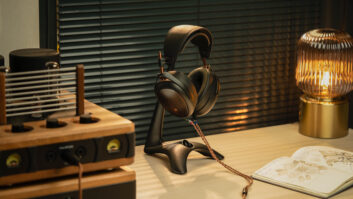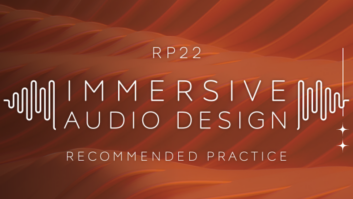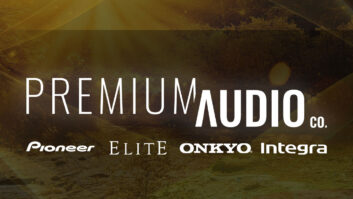The Internet music craze has created a bit of a dilemma for music lovers. Those streaming audio channels and gigabytes of MP3 files are trapped in the PC, not exactly the most convenient listening environment.
So what’s a music-loving computer geek to do? Move the PC into the living room, of course. That’s pretty much the idea behind what could be the next big audio-component category.
Newcomers to the category at CES include JVC, Samsung, Revox and ZapMedia.
The entire PC doesn’t need to be moved, of course. Dozens of companies have created variations on a PC theme, cherry-picking the specific PC attributes necessary for creating an Internet audio component that will fit neatly into your A/V stack and store compressed digital music files, or play streaming audio, or both.
These new Internet audio components usually have three major attributes — a multi-gigabyte hard drive, a CD player and a modem connection — and perform a number of PC-like activities, namely:
- Ripping tracks from a CD and storing them in compressed form — usually in MP3 form — on the hard disk drive, creating a jukebox capable of storing thousands of tracks.
- A net connection to GraceNote’s Internet-based Compact Disc Database (CDDB), which automatically finds and assigns the track title/artist/album/ time information.
- Connection to a TV, which serves as the monitor so you can view and manipulate your files with a remote control or optional keyboard.
- And, in some cases, brings in streaming Internet music channels or local radio stations from around the country or world.
In other words, a consumer could have access to their entire music collection from one small component-sized box without messing about with CD jewel cases, or receive specialized commercial-free music channels or local radio stations streamed from all over the world.
“This is a brand new category and product,” says Seth Dotterer, marketing director for Turtle Beach, which will unveil an updated version of its AudioTron ($299) streaming Internet music receiver. “We’ll see a lot more computers that don’t look like computers showing up around the home. The flexibility you get from digital music is much better than trying to trade out CDs of 10 songs each.”
Turtle Beach is one of a number of specialty companies that make Internet music jukeboxes but have more expertise in the PC peripheral market than in the mainstream CE market. At CES, more of the big boys are getting into the game, with JVC and RCA joining Philips and Kenwood, potentially brining the heretofore computer hobbyist product into the mainstream.
“What percentage of your CD collection do you listen to?” asked Rocky Caldwell, strategic business development and product planning manager for RCA, which enters the market with its long-delayed Digital Media Manager ($999, May). “Most people say they listen to about 20 percent of their collection in a year,” he said. “When we asked if they would like to listen to a higher percentage, everyone says ‘yes.’ People own a lot of content, and they would like to hear more of it.”
Many of these boxes also are capable of bringing in live audio streams from the net, either from proprietary music or local radio-station aggregators such as RealNetworks, iM Networks, Lime Radio or OpenGlobe.
“The highest level of interest [in Internet radio] is not necessarily male or female but consumers who don’t live where they grew up, who have moved away from home town,” said Art Hays, Philips’ shelf system marketing director. “A lot of people use Internet radio at work if they’re an expatriate to pick up radio from their home country or home town. The consumer base is much larger than we anticipated. Almost everyone is from someplace else.”
To tap into this market, Philips plans a CES introduction of its second-generation Internet radio shelf system, the MCi-200 ($399, June).
The problem, at least as far as selling to the mainstream consumer, is that Internet audio and hard-disk jukebox components have more in common with a PC than with a CD player. For instance, the key attribute of these new components is their net connection.
The Internet audio components usually have USB jacks as well as inputs for analog phone lines and Ethernet. Consumers with a dial-up Internet service provider (ISP) won’t have a problem — unless that ISP is AOL. AOL is a closed, proprietary environment that can’t be used as a primary link to these streams, at least not right now. And if the consumer has a cable modem, it’s usually in another room, requiring a home-network solution such as Home PNA.
“Our goal is that this product should be as close to plug and play as possible,” says George Prokop, product manager at Hewlett-Packard, which last October shipped its Digital Entertainment Center ($999), a combined CD-burner, hard disk jukebox and streaming audio receiver. “Although it’s not as simple as a CD player, it is like a satellite dish or a TiVo.”
The PC characteristics may limit the initial audience to the techno-initiated. “People who have been downloading understand,” said Chris Solomon, marketing and business development VP of ZapMedia, which in November started shipping its combined hard-drive jukebox/streaming component, the ZapStation DMC-100 ($1,499). “If you haven’t downloaded music, you don’t understand. But 60 million people registered at Napster at its height, which is pretty big number of people. Even a fifth of that is 12 million people.”
But even 12 million people is niche market to folks such as Philips and RCA, who will want to downplay if not ignore all that PC techspeak and reinforce the features and benefits for their Joe Six-Pack customers.
“The technology should be transparent,” agreed Dave Hyman, CEO of CDDB owner GraceNote. “When consumers recorded cassettes, they didn’t know how the music got on the cassette. They just knew that they could make a copy. Consumers just need to know that the CD is recorded inside the device. What’s important is that they can get their music.”
Although the concepts behind the product are transparent, it is clear that the execution is not. A device with a hard drive, USB and Ethernet ports, and Internet connectivity may give relatively unknown companies a slight advantage in the early going over the major CE players.
For instance, many of the initial products from the usual CE suspects here at CES overlook some of the features and amenities that PC-centric companies take for granted. The JVC NX-HD10 shelf system, for instance, has a 10GB hard drive but lacks a net connection to CDDB, which means the consumer will have to type in all the track information himself — if he buys the optional keyboard.
“Most people will expect to find this in the audio aisle — that’s where we’re going to sell it,” said HP’s Prokop. “But a lot of customers expect or want to see companies like ourselves. Customers feel much more comfortable buying an Internet-connected appliance from a company that is familiar with Internet connectivity. We know the capabilities, we know how to design them — we know this [market].”
The next trick, especially for the CE makers, is to drag the price for these boxes from the PC heights to a more respectable consumer range. A number of these boxes are designed more as multi-zone servers for the custom-installed market and are priced between $5,000 and $20,000. But even those Internet audio components designed for the mainstream consumer hover mostly in the $1,000-$1,500 territory.
“To get to the mass market, most people’s expectation is below $500, but the technology isn’t here yet to get to that price point,” insisted Robin Courtenay, sales and marketing director of Imerge, which last November shipped two- and three-zone versions of its S1000 SoundServer. “But there is constant integration of components at the chip level — the whole idea of a PC on a chip. As more and more people enter the market and demand grows, the price comes down. But there are chunks of costs in the these devices, such as the drives themselves.”
Even though the cost of entry is still a bit high for mainstream consumers, there is one advantage to buying now — their Internet audio component won’t be obsolete six months from now. Thanks to the Internet connectivity, these boxes can be upgraded with new software and features that will enhance functionality.
“One of the keys of traditions of the consumer electronics business is early adopters, but more and more of these early adopters are willing to wait until price comes down on second generation units,” said Bob Pankratz, president of Escient Convergence.
The company plans January shipments of its daisy-chainable FireBall CD-RW burner/40 GB hard disk jukebox/ streaming audio receiver this month. Pankratz said, “Not having a product that will be obsolete might look more attractive.”













